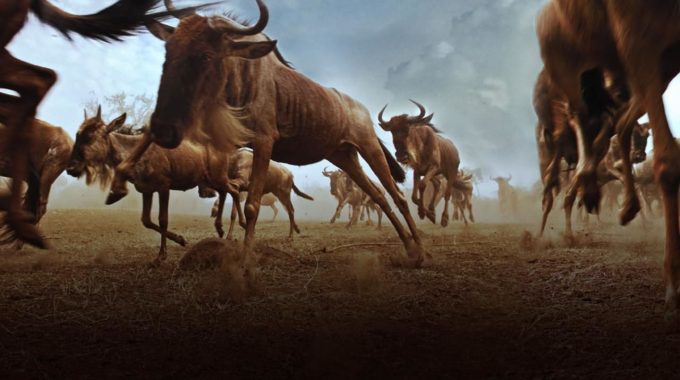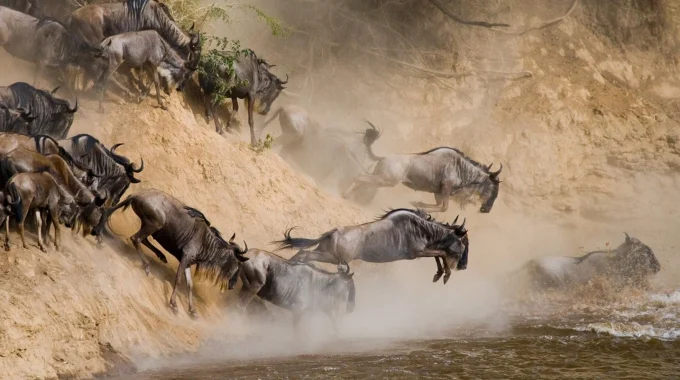A Kenya safari cost can vary significantly based on several factors, such as the season,…
What month is the Great wildebeest migration?
What month is the Great Wildebeest migration? – The Great Wildebeest Migration in East Africa is a year-round phenomenon, but it follows a specific cycle through the year, primarily in the Serengeti (Tanzania) and Maasai Mara (Kenya). The migration’s timing depends on the seasonal rains and the availability of fresh grass. While the wildebeests, zebras, and gazelles are constantly on the move, there are key periods during which the migration is most dramatic.

Here’s a breakdown of the migration’s timing:
-
Calving Season (January to March)
- Location: Southern Serengeti (Tanzania)
- Details: The migration begins in the southern Serengeti plains, where the wildebeests congregate to give birth, usually between January and February. This is an incredible time to visit if you’re interested in seeing calving season, as over 500,000 wildebeests are born during this period. Predators, such as lions and hyenas, are also attracted to the area, so there is high action.
-
Moving North (April to May)
- Location: From the southern Serengeti to central Serengeti and towards the western corridor
- Details: As the herds begin to move north, typically around April to May, they follow the rains in search of fresh grazing. This is also when the wildebeests cross the Grumeti River in western Serengeti, which is a dramatic crossing point and marks the start of the northern journey.
-
River Crossings (July to October)
- Location: Northern Serengeti and Maasai Mara (Kenya)
- Details: The wildebeest migration reaches its peak in July to October when they cross the Mara River into the Maasai Mara in Kenya. The Mara River crossings are one of the most iconic events in the migration. The wildebeests have to brave crocodiles, and the crossing is often featured in wildlife documentaries. The herds remain in the Maasai Mara during the dry season, grazing on the lush grass in the area.
-
Return South (October to December)
- Location: Maasai Mara (Kenya) to Southern Serengeti (Tanzania)
- Details: After spending time in the Maasai Mara, the wildebeests begin their journey back south, usually by October to December, following the rains again and moving back toward the southern Serengeti to start the cycle over.
Best Time to Witness the Migration
- For River Crossings & Dramatic Action: The best time to witness the most dramatic part of the migration, particularly the Mara River crossings, is from July to October. This is when the herds are in the northern part of the Serengeti and into the Maasai Mara in Kenya.
- For Calving and Wildlife Interaction: If you prefer seeing newborn calves and want a more peaceful time with fewer tourists, the January to March period in the southern Serengeti is ideal.
Overall, the migration is a natural cycle that spans the entire year, but the July to October period is widely considered the peak time for watching the most dramatic moments of the migration, including river crossings and predator-prey action.
Are you interested in Booking an African Safari to See the wildebeest Migration? Contact Adventure in the wild safaris to plan you Kenya Safari or Tanzania Safaris.



